How to catch a catfish on instagram
How To Avoid Getting Catfished By Fake Instagram Accounts
At the height of the 2013 football season, a sports media outlet called Deadspin published a story entitled “Manti Te’o’s Dead Girlfriend, The Most Heartbreaking And Inspirational Story Of The College Football Season, Is A Hoax.”
As it turned out, Manti Te’o was the victim of an elaborate catfishing scheme in which an acquaintance tricked Te’o into falling in love with a woman online. Later, Te’o was informed that this woman, who never existed, died after losing her battle with leukemia.
If a famous football star who had access to coaches and private investigators could be fooled by a simple catfishing scheme, many other people are potentially vulnerable to making the same mistake on Instagram.
Fortunately, there are ways to determine if you are being catfished. Here are 5 tactics that can help you verify if an Instagram account owner is representing him or herself accurately.
1.Nefarious accounts are frequently followed by other nefarious accounts. Simply by looking through accounts that are following the Instagram account in question, you should be able to get a sense of whether the account is valid.
It is common for those interested in making a fake Instagram account to purchase fake followers through platforms like Fiverr or Instaboostgram. Inspect a handful of the accounts following the account in question. If follower content is varied and includes posts with likes and legitimate comments, it is a sign that the account in question is legitimate. Follower content that lacks variety may be a sign that the account is not real.
2. READ INSTAGRAM POST CAPTIONS AND COMMENTS.Another way to determine if an account is real is to read through Instagram post captions and followers’ comments. Are the captions coherent and spelled correctly? Do followers comment in such a way that leads you to believe the followers know the account owner? Are the accounts of commenters fully fleshed out?
If the answer to the questions above is yes, it is another good sign that the account in question is being run honestly. If the answer is no to at least some of the questions above, you should do further digging before coming to a conclusion.
If the answer is no to at least some of the questions above, you should do further digging before coming to a conclusion.
According to a 2016 PEW Research study, nearly 80% of American adults have a Facebook account, while 32% have an Instagram account. Chances are the owner of the Instagram account you are investigating has a social media profile on another platform. If you are unable to find a profile on another platform, it may be acceptable to ask the account owner for a link to the profile.
If the owner refuses to provide a link to their profile, or if the profile on another platform appears to be illegitimate, it is a red flag that the owner is not representing him or herself accurately.
4. RESEARCH THE PERSON’S FULL NAME VIA DIGITAL DIRECTORIES.There are a number of online directories through which you may be able to find the person’s name and address. Try simply “Googling” the person’s name. If that fails to turn up anything, you should note that many localities require by law that all home sales be published.
Try simply “Googling” the person’s name. If that fails to turn up anything, you should note that many localities require by law that all home sales be published.
It may be possible to find information about the account owner by searching for a specific house sale via a local newspaper. Alternatively, if home sales are a matter of public record in the area you are searching, you should be able to call the local town hall to ask for more information.
Readers who are truly committed to learning about the identify of an Instagram account owner can also try using a background check service. Platforms like Hire Right and Intelius provide interested parties with some legal and financial information depending on the level of detail you request. Note, however, that some states have made it illegal to begin a background check without first obtaining the subject’s written consent.
5. UNDERSTAND THAT VERIFICATION CAN BE CHALLENGING.While it may feel like the internet is a relatively safe place, thanks to machine-learning programs that filter out offensive comments, as well as human moderators who clean up offensive content for organizations like Facebook and Google, the internet does have some safety issues.
It can be difficult to fully verify a person’s identity without either meeting the person, or at least obtaining detailed personal information in order to conduct further research. It is best to recognize that, at some level, relying on the accuracy of an Instagram user’s claims can be risky if you don’t know the account owner personally.
To avoid becoming a victim of catfishing, it is important that you first and foremost understand that verifying an account owner’s identity will be challenging. That said, it is always a good idea to review the accounts of those following the account in question.
It is also smart to review the captions and comments from previous posts to see if the account owner appears to have made connections with other users in a meaningful way. Be sure to also research the account owner via other social networks and digital directories.
How to Spot a Fake Online Social Media Profile
Catfish are everywhere, and they’re becoming a huge problem on the Internet.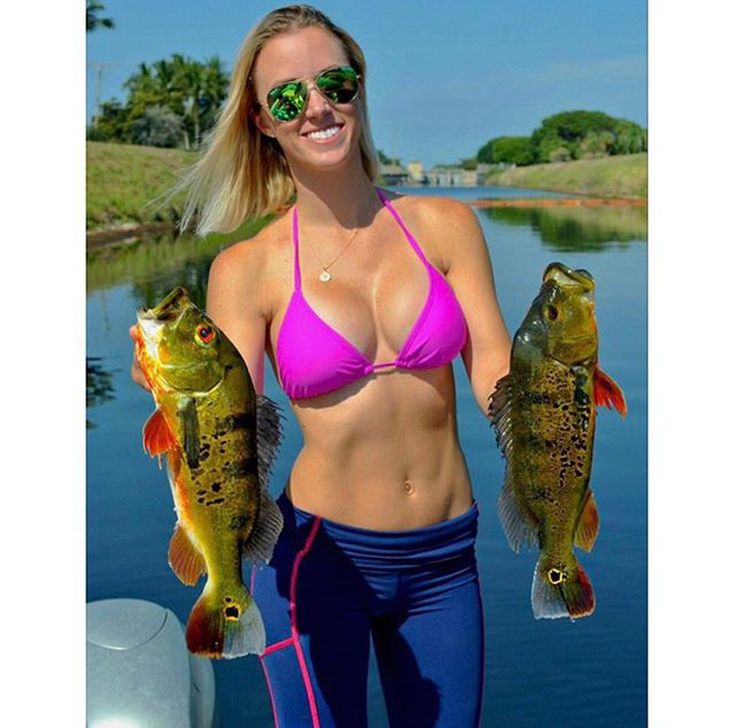
No, we’re not talking about the ones in the ocean; we’re talking about the fake profiles on social media and online apps.
How do you know if you’re talking to a catfish online? Well, we’re going to explain a foolproof method on catching catfish.
It comes in two stages, and it is courtesy of YouTube user GradeAUnderA.
What Is a Catfish?
For those who don’t know what a catfish is, it is someone who makes an account on social media and pretends to be someone else, usually by using someone else’s pictures instead of their own. Anyone who creates a fake profile on Facebook, Instagram, Twitter, etc. is considered an (online) catfish.
One common example we see all the time is when someone is talking to a gorgeous model he/she has never met before. In reality, that’s not the case at all. They’re probably talking to an online criminal.
1. The Google Image Search
The first thing you want to do after you found a sketchy profile is to right-click on the image and click ‘Copy Image URL.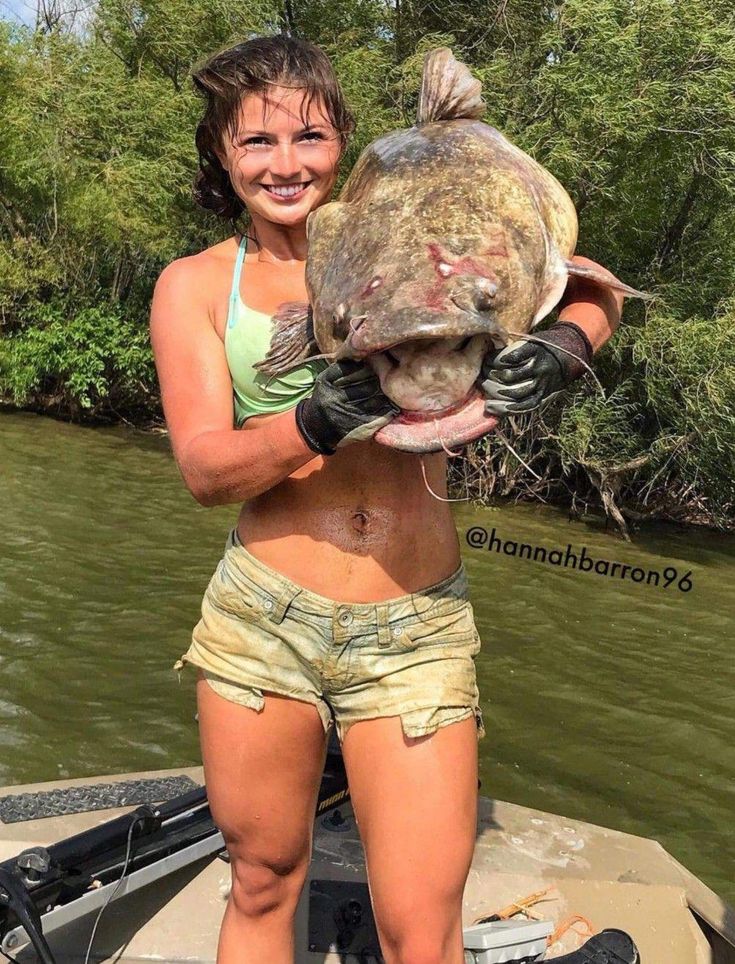 ’
’
Now, go to Google Images, and click on the camera icon.
It will pop open this screen.
Now, paste the image URL in the search bar under ‘Paste image URL’ and then click ‘Search by Image.’
Let’s use an example to make it easier and more ‘pleasing to the eye.’
Let’s Go Fishing (with Google & Google Images)
Let’s say you get a new follower or a friend request from someone like this: a nice looking girl on Instagram who goes by the username Rebccaxoxo.
She gives you a quick message in your inbox: “Hey. How are you?”
What do you do? (Hint: Do NOT reply.)
The answer: check to see if it’s a fake account on Google Images!
Take a look at all the results we found just by pasting her image URL into the search bar.
Source: http://backup.heck.in/post-title-4.xhtml
We know this is a fake account now. Why? Because Google was able to access her real name: Maggie Lindemann. (If you open another tab and google her name, you’ll find her Instagram account in the search bar.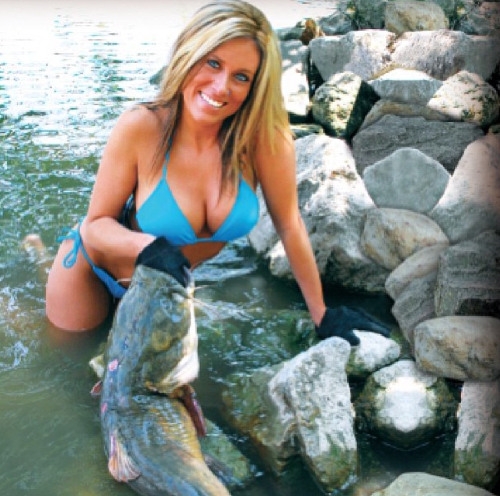 She’s very well known in England and has over 1.5 million Instagram followers.
She’s very well known in England and has over 1.5 million Instagram followers.
Google’s search bar didn’t only track the image (the JPG). It didn’t only give you 47 search results with same selfie. It also searched for the name of the person linked to the image!
Pretty cool, huh? Nothing gets past Google!
Have a look at this video from Google. It explains how to search by image in more detail:
2. Spot Catfish by Making a Simple Request
The Google Image search should do the trick when trying to spot a catfish. However, in case you don’t fully trust Google – for whatever reason – you can try this:
Ask them to send you a picture touching their ear with their pinky finger. Simple!
Now you’re probably thinking, “Why would I do that?”
Think about it. Catfish can only send you pictures they can find online. How many pictures can you find of someone taking a selfie while touching their ear with their pinky finger? None!
It’s something so specific yet so random at the same time. Plus, it filters out all the images they can find of the person they’re pretending to be.
Plus, it filters out all the images they can find of the person they’re pretending to be.
Of course, you could ask them to take a picture of themselves doing something else. Ask them to put their left hand around their head touching their right ear, for example. (As long as it also shows their face, you’re good to go.)
The point is to make them do something that would be difficult for them to do and entertaining for you if they decide to do it.
What Will Happen When You Ask Someone to Do This?
They will get really defensive and try to blame you when you catch them.
“Why do you want me to do that? Don’t you trust me?”
They will not want to talk to you anymore because you know that you caught their fakeness.
It doesn’t matter anyway, because you’re going to put them out of their misery: by reporting them! 😉
Conclusion: Watch Out for Online Catfish (They Bite)
That is the simple guide to spotting a catfish. May your time on social media be fun, fruitful, and catfish-less!
If you watch some catfish stories, there is a show called Catfish that documents several episodes of people who actually fall victim to online catfish.
…And if you have any other interesting techniques on how to catch online catfish, you’d like to share, be sure to email us at [email protected].
Catching catfish in winter - myth or reality? How to catch catfish in winter: the most catchy ways and secrets of experienced fishermen Does catfish bite in winter.
Buy with good discounts for personal use and as a gift to friends and acquaintances.
Buy quality products at affordable prices at . Make gifts for yourself and your loved ones!
Follow us on Facebook, Youtube, Vkontakte and Instagram. Stay up to date with the latest website news.
Features of winter fishing for catfish
This powerful and heavy predator is the dream of any angler with spinning rods, vents and bottoms. There is an opinion that with the establishment of ice, fishing for catfish stops. This is true for most reservoirs in central Russia. But it all depends on the temperature regime of the reservoir and the density of the predator in it. Many cooling reservoirs for nuclear power plants do not freeze at all in winter. And if catfish are found in them, then fishing on them is possible all year round.
Many cooling reservoirs for nuclear power plants do not freeze at all in winter. And if catfish are found in them, then fishing on them is possible all year round.
In the Astrakhan region, in the Volga delta, catfish also do not lose activity during the winter period. It's warmer and there are more fish. A sort of fishing Eldorado, where you can take your soul for real fishing. And catfish, apparently, thinks the same way. Therefore, the mustachioed one does not sleep in the wintering pits, but still goes out to rob on the deep pit edges of the channels and reed erics. The only difference is that in winter it takes catfish much less time to hunt. Everything is connected with the so-called metabolism, that is, the metabolism in the body, which is slowed down in winter in all fish. In cold water, catfish have no time for fat, if I were alive ... And therefore they eat as much as is required so that the strength in their powerful blued bodies with furious strength does not fade away.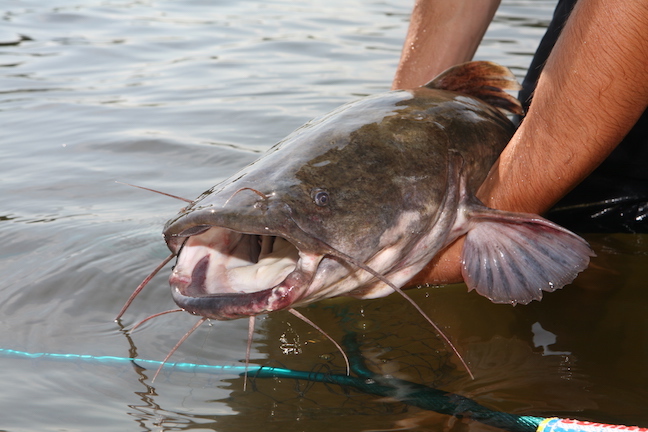 This already warm summer, they will bask at night in the moonlight, coming out with a quiet splash to the surface, recklessly attack sleepy fish, on a sunny day grab gaping chicks and ducks in the reeds, pick up from the bottom everything that has protein and calories, be it lying carrion.
This already warm summer, they will bask at night in the moonlight, coming out with a quiet splash to the surface, recklessly attack sleepy fish, on a sunny day grab gaping chicks and ducks in the reeds, pick up from the bottom everything that has protein and calories, be it lying carrion.
Catfish fishing spots are selected in advance, from the open water period. And there is nothing new here. Just like in summer, these predators stay in deep pits, and go hunting to the nearby pit edges, not going far from the parking lots, as happens in summer.
Since during this period the catfish are in a borderline state between lethargic dormancy and periodic episodes of activity, then for catfish fishing something cardinal is required to interest the predator, up to the point of knocking on the strong head of the catfish with some heavy and quick bait. This, of course, is ironic, but the baits really need active and rather large ones. And these baits include balancers.
Winter fishing for catfish on balancers and spinners
For catfish fishing, of course, you need large and active baits, preferably bright colors, with the addition of the article F, that is, phosphorus shades. Why are these colors needed? The fact is that catfish fishing occurs at great depths and often under a layer of snow. Even on a bright day, when the snow-covered expanses of the reservoir or the channels of the Volga delta are flooded with sunlight, this light barely breaks through the ice.
Why are these colors needed? The fact is that catfish fishing occurs at great depths and often under a layer of snow. Even on a bright day, when the snow-covered expanses of the reservoir or the channels of the Volga delta are flooded with sunlight, this light barely breaks through the ice.
Spider Pro balancers, size 9, are among such catchy and active lures.0mm colors 27, 29 which are popular colors in pike fishing. They will be appropriate in fishing for catfish. These colors are best used during the day. In the evening or early in the morning, as already mentioned, you need phosphorescent colors with the addition of the letter F. Luminous baits when catching a predator at dusk can give odds to any of the most advanced and expensive balancers of a regular color.
Why exactly balancers can be attributed to successful lures for catfish? Classic balancers, which include Spider Pro lures, have a very active and wide game, which largely depends on the stabilizer of the lure. In Spider Pro balancers, the stabilizer, which is also called plumage, is made of special impact-resistant plastic. Due to its design features, the balancer deviates far away from the center line of the hole, and then on the way back it sometimes makes movements resembling a “figure eight” or a sharp loop. With the next stroke, the bait turns around and moves in the opposite direction. And we have already said that a sleepy catfish sometimes lacks such a show, so that, shaking off the remnants of drowsiness, rush after an impudent fish, even if it is just an artificial bait. Considering that several catfish accumulate in the pits in winter, the joke about poking a catfish in the head with a heavy bait may turn out to be a reality. Underwater filming has shown such episodes more than once, when the bait literally knocked on the fish head.
In Spider Pro balancers, the stabilizer, which is also called plumage, is made of special impact-resistant plastic. Due to its design features, the balancer deviates far away from the center line of the hole, and then on the way back it sometimes makes movements resembling a “figure eight” or a sharp loop. With the next stroke, the bait turns around and moves in the opposite direction. And we have already said that a sleepy catfish sometimes lacks such a show, so that, shaking off the remnants of drowsiness, rush after an impudent fish, even if it is just an artificial bait. Considering that several catfish accumulate in the pits in winter, the joke about poking a catfish in the head with a heavy bait may turn out to be a reality. Underwater filming has shown such episodes more than once, when the bait literally knocked on the fish head.
When catching catfish in the deep-water areas of the reservoir or the Volga channel of the lower reaches of the Volga, there is one important detail: the balancers will work actively and to the full extent of their capabilities, if you use a non-standard swing of the fishing rod, that is, shortened and sharper than, for example, in fishing at a depth of up to five meters.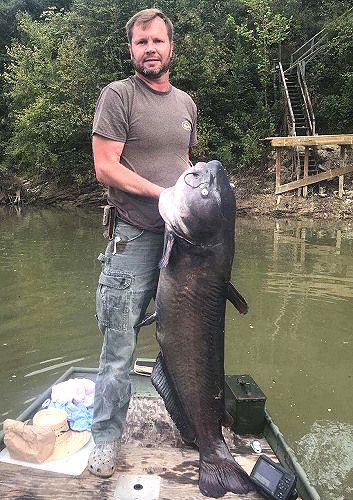 When fishing in relatively shallow water, it is enough just to raise the balancer, as it immediately “starts up”. Greater depths level and average the jerks of the rod. Therefore, more effort is needed to ensure that the lure can make a deviation from the vertical and then glide back in its famous ornate dance...
When fishing in relatively shallow water, it is enough just to raise the balancer, as it immediately “starts up”. Greater depths level and average the jerks of the rod. Therefore, more effort is needed to ensure that the lure can make a deviation from the vertical and then glide back in its famous ornate dance...
Spinners are also successful baits in catching catfish, but most often they turn the fish red. Apparently, predators are only curiously interested in a strange fish that dared to invade their living space, but its decision has not yet come to grab. And then the fish itself grabs the king of the underwater kingdom and drags it upstairs.
For fishing at great depths, according to the logic of fishing conditions, it would seem that narrow and heavy lures are required, similar to zander lures, only even heavier. But these baits will work too sluggishly at depth, which may be of interest only to the same sluggish walleye or pike, especially if fishing takes place in the middle of winter. What kind of lure to choose based on the capture of catfish?
What kind of lure to choose based on the capture of catfish?
Recently, summer spinners have become widely used in ice fishing. Their advantage is that they play well at all depths: from coastal shallow water to a depth of 8-10 m. At the same time, summer spinners have additional game phases, when at the moment of pause the bait rotates around itself for some time. Sometimes it is at this phase that the predator grabs the bait. In addition, the oscillating spinners of the summer series have a long game on their own due to the wide body, which allows you to make many waddling movements, sliding in the water column away from the vertical, nimble dives, which distinguishes these baits from ordinary winter vertical lures that fall to the bottom heavy nail. But for fishing at great depths, even such a wide-playing bait must receive an energetic impulse in the form of a sharp short throw of the rod.
As already mentioned, in order to stir up a sleepy catfish, you need an active bait that irritates the predator and makes him attack. Oscillating lures for summer fishing are also great as a winter active bait. The only condition: the oscillating lure must weigh at least eighty grams, be large and light, resembling a silver roach. Lures such as these include: Catfish Spoon - 85 g, Detector Spoon - 80 g, Mad Max Spoon - 80 g.
Oscillating lures for summer fishing are also great as a winter active bait. The only condition: the oscillating lure must weigh at least eighty grams, be large and light, resembling a silver roach. Lures such as these include: Catfish Spoon - 85 g, Detector Spoon - 80 g, Mad Max Spoon - 80 g.
Jig silicone baits are also successfully used in winter. In the twilight light of the underwater deep world, luminous fluorescent vibrotails and twisters 12-15 cm long work especially well. Recently, the so-called edible rubber has become widespread. These are also very effective baits, which, in addition to the visual effect, have a smell that attracts a predator. The weight of the sinker or jig heads is about 50 grams. At greater depths, more massive baits are also used.
Winter catfish fishing requires durable composite rods. The length of such a rod can reach a meter. Also, to equip a fishing rod for catching catfish, you need a winter inertialess reel that can work without failures at sub-zero temperatures. The coil is equipped with a braided cord with a diameter of 0.18-0.2 mm.
The coil is equipped with a braided cord with a diameter of 0.18-0.2 mm.
Catching catfish on hooks and vents in winter
Despite the appearance of more and more new and natural-looking most expensive artificial lures, the predator unmistakably chooses a live fish. In addition to the appearance, the fish has a whole gallery of bright and subtle odors, vital fluids, a spectrum of frequencies and vibrations to which any predator, including catfish, reacts. Therefore, live bait tackle for catfish is the most practical and catchy for the winter period. In addition, fixed gear has another very important advantage: when they are placed in the right places, the angler moves away from them and does not create excessive noise on the ice that the fish hears perfectly, be it just the creak of fishing shoe covers in the snow. Any venter will confirm this, because when approaching the vent, which has just been the grip of a predator, no matter how quietly the angler tries to sneak towards it, the pike will still hear him and try to leave, spinning the vent reel with a whistle. And this despite the fact that the depth in this place can be ten meters.
And this despite the fact that the depth in this place can be ten meters.
The simplest tackle among live bait crafts are the so-called "postavuhi" for catfish. This is just a piece of strong nylon cord, on which there is an end sinker, and above it is a leash made of strong monofilament fishing line with a diameter of at least 0.3 mm and a length of about 30 cm. A large single hook No. 16 of our numbering or a double of the same is tied to the leash. numbers. A rather large roach or any other "white" fish is mounted on the hook. The most reliable way to hook a live bait is to pull the leash through the gills of the fish and secure the hook in the mouth of the live bait. To do this, the leash must be detachable. This method will not give the predator a chance to pick the live bait and leave. True, the service life of the live bait on such equipment is shorter than with the method of putting the live bait under the dorsal fin. But in cold water it is not as noticeable as in the summer. The difference in life expectancy of live bait with these methods in winter is insignificant.
The difference in life expectancy of live bait with these methods in winter is insignificant.
At the top, in the hole, the post is fixed with a strong stick placed across the hole.
These simple tackles are mainly used by local anglers, for whom fishing is not only a rest of the soul, but also a serious addition to the table. Therefore, these rational and catchy tackles often bring good prey, as the locals know all the catfish holes and put out several tackles, sometimes quite a lot.
Catching catfish on the vents can be no less prey, but there is already such an important factor for the angler as the bite, that is, the grip of a predator, when the scarlet flag of the vent rises above the silence of the ice. And this makes it much more interesting to catch catfish on live bait tackle.
We have already considered the main types of girders more than once. The most popular option is where a rack with a coil and a flag on a spring is attached to a plastic stand.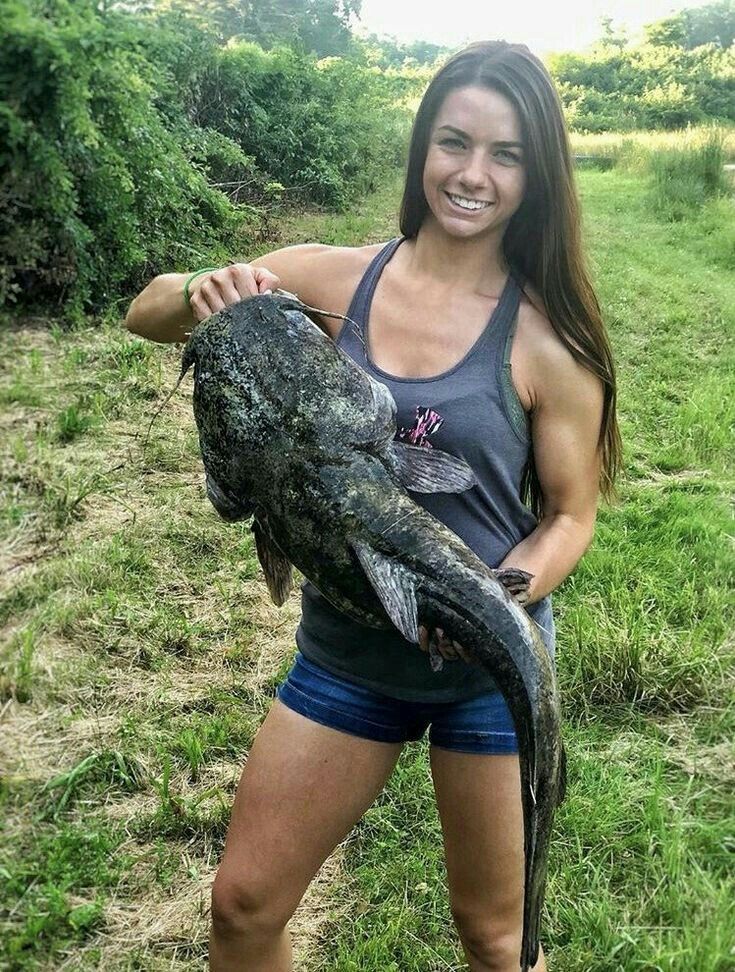 But there is another type of girders that was also once an ingenious DIY, but now produced by well-known companies, which include Akara.
But there is another type of girders that was also once an ingenious DIY, but now produced by well-known companies, which include Akara.
This vent has an original design, which has its pluses and minuses. The advantages include simplicity, functionality of tackle and the availability of ready-made equipment on the vent. Moreover, unlike other ready-made rigs, made “anyhow”, which are not even capable of catching, on the Akara 3601-002 rig the rig is ready for fishing without any alterations, but ... for catching pike. If you use gear for catching catfish, it is better to replace the monofilament line with a diameter of 0.35 mm with a braided line 0.3 mm thick or with a monofilament of a larger diameter, for example, with a line with a thickness of 0.6 mm. You will also have to replace the tee with a larger one, for example, No. 12-14. Another advantage of this vent is the sound background, or simply a click when the plastic parts collide when the flag is turned over. On ice in frosty calm weather, such a click will be heard quite far away, which will allow you to react in time to the grip and hook the fish.
The disadvantages include the small size of the plastic flag, which will not be visible if the vents stand at a distance of more than a hundred meters from the angler. At least, such a flag will be less noticeable than the flag of a homemade vent fluttering in the wind. However, when catching catfish, you should not go far from the vents, so as not to lose tackle. Catfish is a serious fish.
Zherlitsy and postavuhi are baited with large live bait fish and placed along the pit edges, where hunting catfish can come out. Most often, predators go out early in the morning, sometimes it’s still dark, but it happens that catfish grab live bait before lunch, and closer to spring, the time for daytime hunting of catfish is increasing.
In review articles: and you will find a lot of useful information about fishing during cold and frost periods.
This page will tell you about many popular fishing tackle and accessories.
We describe in detail living, vegetable, artificial and unusual.
In the article you will get acquainted with the main types, as well as the tactics of their use.
Learn everything to become a real angler and learn the right choice.
Professional fishermen say that catching catfish in winter requires not only patience, but also skill. To catch this fish, you need to drill holes in the ice, which already speaks of the professionalism of the fisherman. Naturally, for such a case, it is necessary to prepare gear in advance in order to pull fish of various weights from the hole at the right time. In addition, for winter fishing for catfish, it is necessary to select good places even in the summer, when you can carefully consider everything and get acquainted with the features of this fish prize. Catching catfish in winter.
Fisherman's dream
The dream of every angler is a big catfish that flounders on the ice. Naturally, in order to catch such a fish, you need to spend a lot of time selecting bait, as well as choosing a method for catching it. There is an opinion that catfish quickly gain their weight and by winter they can grow up to 200 kilograms. However, the growth of such a fish depends on the reservoir in which it lives and the food with which it increases its weight.
There is an opinion that catfish quickly gain their weight and by winter they can grow up to 200 kilograms. However, the growth of such a fish depends on the reservoir in which it lives and the food with which it increases its weight.
Catching catfish in winter is considered to be especially popular fishing. And even if a blizzard sweeps, all the same, for the sake of the cherished goal - to catch the catfish and pull it out of the hole - the fisherman sits and endures all the hardships of the weather. Catfish are especially active at night when they are looking for food under water. With the onset of spring, they experience a lack of food, from which the uds of such fish can be maximum.
To catch large catfish, needs not only to hook it, but also to patiently wait until it really catches on the hook. When the catfish gets on the hook, it resists quite strongly. If the fisherman caught a big fish, then he may need all the strength to keep it on the hook.
When to catch catfish in winter
In winter, catfish hide in the pits of various reservoirs.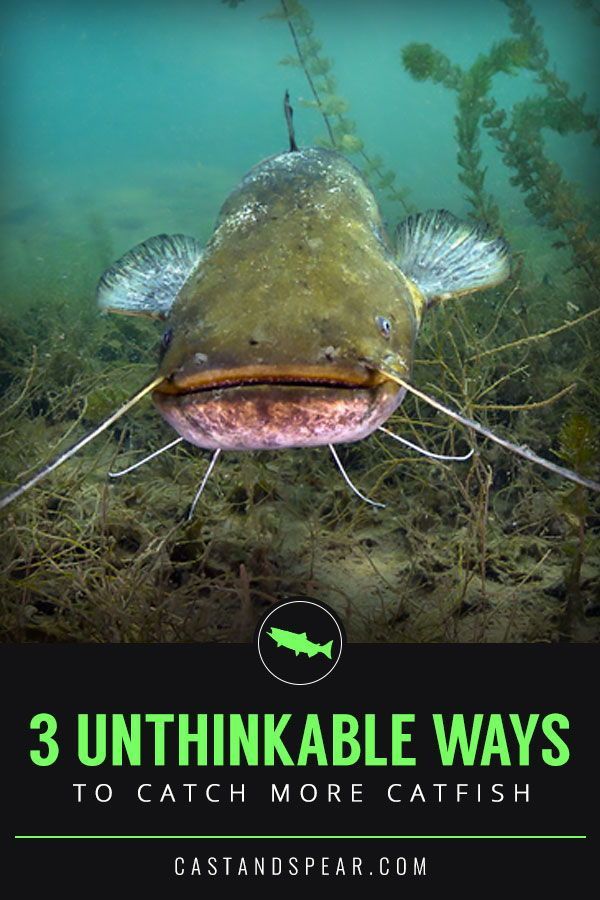 Sometimes there can be several individuals in one pit at the same time. That is why, by making a hole in the ice, you can catch several fish without changing the place of biting. In winter, catfish are usually deprived of food, which allows them to be caught on various baits. Such fish can easily be seduced by any bait. It is best to catch catfish in the evening, when it is most active. However, if there is a snowstorm outside or it is rather cloudy, then daytime is also suitable for catching catfish.
Sometimes there can be several individuals in one pit at the same time. That is why, by making a hole in the ice, you can catch several fish without changing the place of biting. In winter, catfish are usually deprived of food, which allows them to be caught on various baits. Such fish can easily be seduced by any bait. It is best to catch catfish in the evening, when it is most active. However, if there is a snowstorm outside or it is rather cloudy, then daytime is also suitable for catching catfish.
The size of the hole made by the angler is of great importance for catching catfish. The most difficult thing is to guess the place where there may be a pit with fish. Scientists have recorded that the deeper the hole in the pond, the easier it is to catch prey, as the catfish gradually goes to the bait, while enjoying the bait. However, if the fisherman managed to catch a catfish, then when pulling the fish from the reservoir, you need not slow down, because it can jump off the hook due to its weight.
Using a catfish samoder
Catching catfish in winter is due to the correct use of the samoder. This is a device that has a thick fishing line with attached hooks and a weight. Initially, the samoder must be thrown into the hole very carefully so as not to frighten away the fish. There are several hooks on one samoder. That is why, if you are an extremely attentive fisherman, you can catch several catfish at the same time if you get into the hole where they live. It takes a long time to wait for a catfish bite. If the place is chosen correctly and there is a deep hole in the reservoir where the catfish hid for the winter, then a catch can be expected.
Catfish Lures
Fishermen have confirmed that fish such as catfish are best lured with artificial lures. The most preferred are silicone baits, which are made heavy by attaching lead particles to them. The color of such lures allows you to improve the visibility of the fish, thereby focusing on their location. So, for example, if the water in which catfish are found is rather cloudy, then it is best to use bright yellow baits. For clear water, silver or green lures are suitable. Additionally, fishermen can use phosphorous baits, which can glow at night, thereby indicating the catfish for food. The dimensions of the bait should not be more than 20 cm. Otherwise, the catfish will not be able to swallow it, and, therefore, will not swim to the place of fishing.
So, for example, if the water in which catfish are found is rather cloudy, then it is best to use bright yellow baits. For clear water, silver or green lures are suitable. Additionally, fishermen can use phosphorous baits, which can glow at night, thereby indicating the catfish for food. The dimensions of the bait should not be more than 20 cm. Otherwise, the catfish will not be able to swallow it, and, therefore, will not swim to the place of fishing.
Sleep is not very active in winter. This allows fishermen to freely lure it to the fishing spot, and hang bait on the hook that the fish can eat. The main factor for successful catching catfish in winter is the temperature of the reservoir in which catfish hides at the bottom.
Catfish fishing is currently prohibited. However, poaching methods of catching such fish today can be seen quite often. People simply do not overdo it by catching fish for their own purposes and needs.
If you first get acquainted with the information that a fisherman may need, then in winter you can catch enough catfish to enjoy the delicious meat of such fish.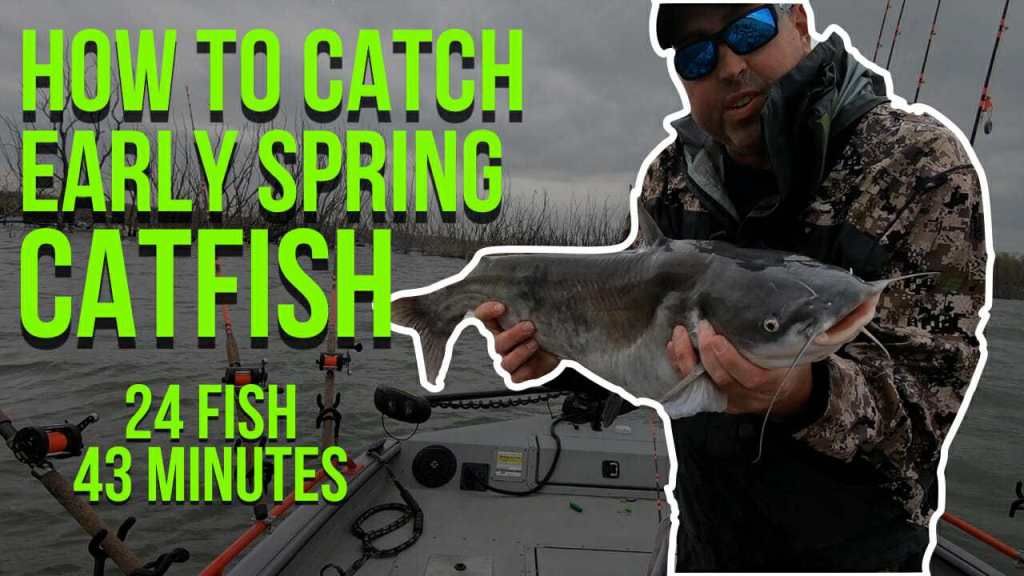 Winter fishing for catfish cannot be carried out anywhere in the reservoir, so you need to prepare for such a complex process from the summer.
Winter fishing for catfish cannot be carried out anywhere in the reservoir, so you need to prepare for such a complex process from the summer.
Say what you like, but fishing in the open water of rivers, lakes and reservoirs in winter is a new topic in modern fishing, because until recently, talk about some kind of climate warming seemed to be something far away. But already today, strategies for “summer” fishing in December (and during thaws and in January) are being discussed with might and main, until the first picks noisily clatter on snow-white ice and freshly caught red-finned perches dance on the ice.
And somehow it turned out that spinning became the main scout of cold waters, probably because its catches are quite stable, and often extremely productive. Until the freeze-up, active spinningists do not give up, pulling large pike and zander on the rivers. And what is interesting, in zander's pits, it is not uncommon for fate to endow them with catfish bites. Yes, this is not surprising, pike perch and catfish are frequent neighbors.
As experienced fishermen say: “Late freezing is a great success for us! Well, if there is no ice at all, then this is a great happiness. After all, from ice, that pike perch, that catfish are badly taken, but from boats they jig perfectly, until the ice floes float. And they are well caught, even at minus 10, almost after each cast, the line has to be soaked, cast again and the fish are biting - what not happiness! And it happens that you go tomorrow, and that's it, the river has become - there is no way to even lower the boat properly, even though you gnaw this ice with your teeth.
It is worth noting that the main feature of the catfish winter jig is that baleen often wandering in the summer and autumn on the riffles, more or less crowded in the pits. But even here you still need to look for fish, since the channel pits are long, with ragged depths. In early December, catfish can take at the bottom of the pit, almost at its exit. But closer to January, there is a feeling that the predator rises up - to the very entrance. But still, this is not an axiom, and in the absence of grips, one has to tap almost the entire promising hole - from the entrance to the exit, because there are suspicions that migration exists during the day.
But still, this is not an axiom, and in the absence of grips, one has to tap almost the entire promising hole - from the entrance to the exit, because there are suspicions that migration exists during the day.
Catfish caught on a jig from dawn to dusk. But it happens that it breaks through the fish for biting at specific hours, it happened that it only pecked in the morning hours, almost in the dark. But according to the rules, you can sail on a boat only “an hour before sunrise”, and you have to use distant coastal artillery, which does not always help out - it is difficult to break through a steep channel edge on large rivers. Therefore, if possible, fishermen change to boats.
About postings . The classic high step is good for catching an active summer predator, and when the mustachioed is sluggish, lying on the bottom, the results drop sharply - the bait often flies over the fish during high jumps. Experienced jig riders assure that under such conditions, a low, slow step works much better, showing good results at different depths, in the course and in still water of large lakes and reservoirs.
Ideally, the bait should move slowly no higher than 20 cm from the bottom, periodically bounce it briefly, and then continue its unhurried movement. For such postings, two radically different techniques for working with gear are used.
Coil . All wiring is carried out only by the coil. The rod is motionless, in a position convenient for a particular situation. After the bait touches the bottom, the slack is selected and a smooth, slow winding begins, 4-6 turns. Then a pause, in a maximum of a second, the bait should hit the bottom. If it beats for a longer time, say, for 2-3 seconds, then the winding speed is still reduced. If the pause turns out to be quite small, clearly less than a second, then the winding speed is slightly accelerated.
If you have to turn too fast, the bait loading is reduced. And vice versa - it increases when it is not possible to catch with a second pause even with the slowest winding. As a rule, with such postings, the weight of the bait loading is 20-30% less than with a conventional high step.
The whole point of these manipulations is the desire to lead the bait as close to the bottom as possible. And the pause here is not some additional "lure" in the wiring, but simply a reliable way to control the depth of the wiring. Since almost all catfish bites in winter (up to 8 out of 10) go on a uniform reel, in which mini-playing with the tip of the rod or changing the reel speed is usually not possible - the most common unhurried uniform wiring, to which a not very active responds well whiskered.
Spinning . The second option is evenly - stepped wiring is already done with the help of active work with the rod. After casting, the bait reaches the bottom, the slack is selected, the tip of the rod looks in the direction of the cast. The rod is smoothly retracted to the left or right (as it is more convenient) with the rotation of the body body - the amplitude of this movement is 2-3 m, with a long spinning it can be more.
Next, the rod immediately returns to its original position, and at the same time, the slack in the braid is smoothly removed by the reel, preventing sagging. Only the rod was in its original position - in a maximum of a second, the bait should hit the bottom. This is one cycle of the game, which then repeats over and over again. If necessary, all with the same adjustment of the speed of movement and the selection of the weight of the load, in order to achieve the movement of the bait at the very bottom - no higher than the same 20 cm.
Only the rod was in its original position - in a maximum of a second, the bait should hit the bottom. This is one cycle of the game, which then repeats over and over again. If necessary, all with the same adjustment of the speed of movement and the selection of the weight of the load, in order to achieve the movement of the bait at the very bottom - no higher than the same 20 cm.
Lures. Considering that usually a slow, even hauling gives a much better result on winter catfish, not all baits are suitable. Large front-loaded turntables with quick-release weights are good. Massive spinners-oscillators also give excellent results, but here it is already more difficult to choose the necessary weight of the bait for a specific place.
And the leaders, of course, are tires loaded with “cheburashka”, the weight of which is easy to match to a wide variety of conditions. In any case, for any bait with a slow, uniform winding, a good game is required, which is embedded in the design, because there are no jerks here as a class.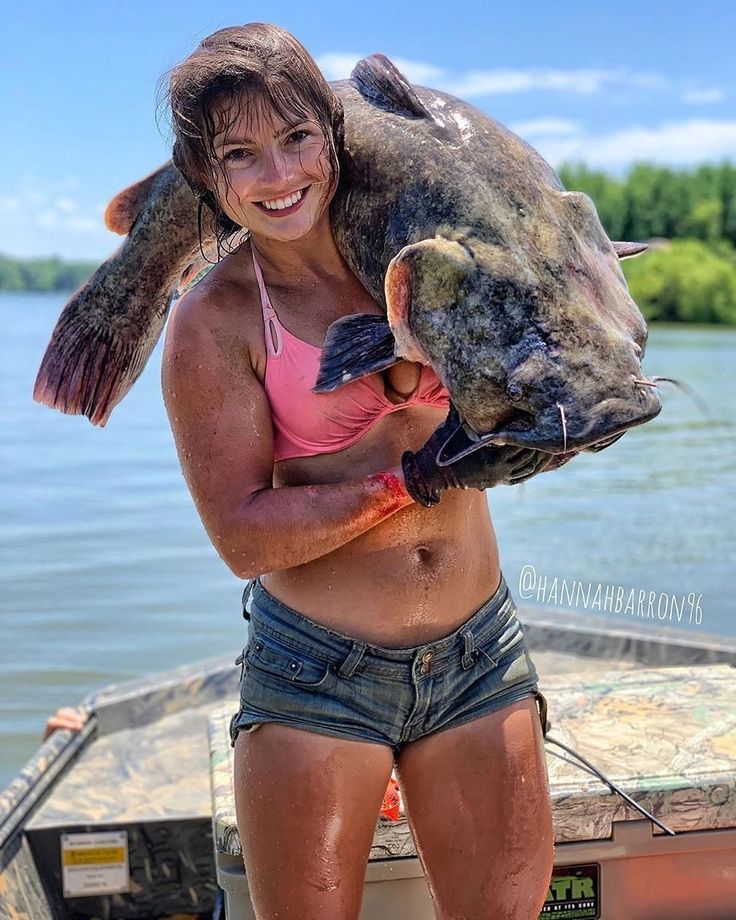
"Manns Predator" is one of the first American rippers that came to us at the dawn of domestic jig fishing, but it is still in demand by spinning anglers, including catfish. This rubber is praised for its high softness, giving excellent play even at minimum speeds. True, for the softness of silicone, you have to pay with the increased consumption of these baits, which are not very resistant to catfish teeth - “brushes”, and pike and zander favor these baits. In terms of colors, the leaders are mother-of-pearl with a black or red back, yellow with red and yellow with black.
Another variant of catfish rubber that has been popular for many years is the American Relax Hoof, with a slanted body and notches on the tail to improve play. Many appreciate the "hooves" for the denser than the "Manns" silicone, which is somewhat better resists the teeth of predators. At the same time, it has the same excellent game even on the same slow wires.
The large “hoof” of the fourth number is a favorite bait for many catfish spinners. The third number is also often in demand, especially when catching catfish and normal-sized pike perch is promising in places where both predators often coexist, and the mustachioed normally responds to small baits.
The third number is also often in demand, especially when catching catfish and normal-sized pike perch is promising in places where both predators often coexist, and the mustachioed normally responds to small baits.
And a few words in conclusion. I don’t believe in catfish tales - I’ve been hunting for him all my life and I know his habits. The main story is that catfish in late autumn and winter peck in the right way, like a fisherman, and this is an honest, not crimson fish. It’s just that sometimes he doesn’t partly take it with his mouth, but simply beats with his tail. And it hits balancers, heavy bolts and other motley baits from the ice.
Let's be honest - why would a normal fisherman deceive himself? And the poacher is a bugler, he is glad to be deceived, he will say anything to disguise himself among our brother. And such gaffers rake out a lot of catfish. The situation is only getting worse, and I propose to introduce a ban on catching catfish from December 1 and for the entire period of freezing.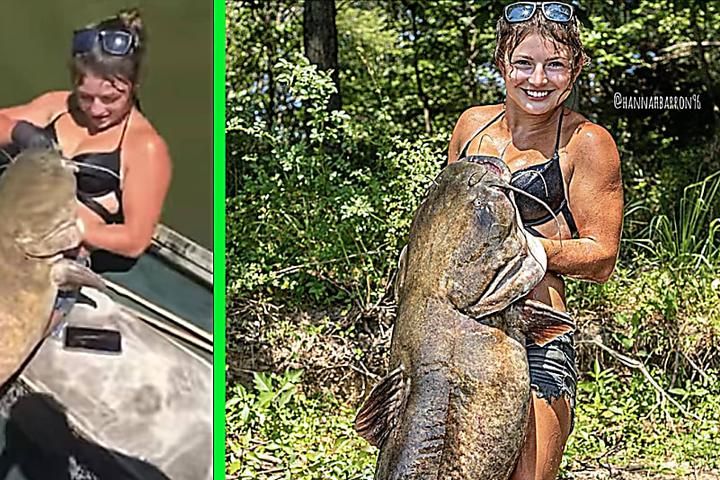 Let this predator winter in peace. Is it bad? Otherwise, the culprits of the decrease in the catfish population will be made quads, spinning fish, bottom fish, again sending this fish to the Red Book.
Let this predator winter in peace. Is it bad? Otherwise, the culprits of the decrease in the catfish population will be made quads, spinning fish, bottom fish, again sending this fish to the Red Book.
It's already sickening to hear about these "tail bites". Why does this predator normally take bait with its mouth in October, and often with its tail in winter? What, his roof is going, habits are changing dramatically? Of course not! From time immemorial, in the middle lane, catfish stop actively feeding at the end of October and go to wintering pits. It is there that the poachers begin to scare them for all parts of the body, convincing us that the mustachioed predator “pecked” with its belly or tail.
Catching catfish in Astrakhan
Catfish is the owner of the Volga delta. There is no fish that could compare with the majesty of the mustachioed giant of the Volga depths. Catching catfish is a real battle between man and nature in the face of a river giant. Real fish, real pond, real gear and real struggle of human and fish characters are the main attributes of catfish fishing.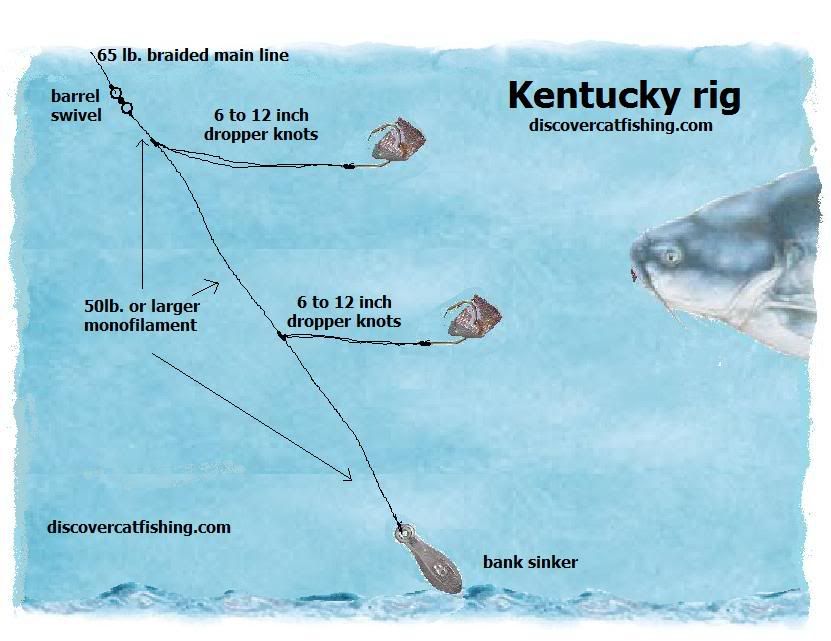 Of course, all this applies to trophy specimens of the mustachioed river predator, but it is these catfish that live in abundance in Astrakhan, and it is these catfish that are the object of catching most anglers. The weight category, to which the main catfish hunting is directed, ranges from 10 to 100 kg. Of course, even larger catfish live in the rich depths of the Volga, but specimens weighing more than 100 kg are very rare.
Of course, all this applies to trophy specimens of the mustachioed river predator, but it is these catfish that live in abundance in Astrakhan, and it is these catfish that are the object of catching most anglers. The weight category, to which the main catfish hunting is directed, ranges from 10 to 100 kg. Of course, even larger catfish live in the rich depths of the Volga, but specimens weighing more than 100 kg are very rare.
Place and time of catching catfish
In the Astrakhan region, the river giant must be looked for in deep channels and banks. The dwelling of the catfish is a deep pit, which is located on the fairway of the river. Sometimes in such pits the depth of the river is about 30 meters, and their length is measured in hundreds of meters. It is necessary to purposefully catch catfish at the entrance and exit from the pit, on the reach and edges upstream from the pit - it is in these places that the catfish leaves its pit in search of food. Of course, you can catch catfish in other places of the Volga delta, but these will be catfish.
Catfish is a heat-loving predator and eats it during the period when the water temperature exceeds 20°C. Peak catfish activity is July and August. It is during these two months that it is most promising to catch him. In June and September, you can also hunt for the river giant, but its activity will be less. In other months, catching a mustachioed giant is futile and it is better to switch to other types of fish during this long period.
Catfish is considered a nocturnal predator, so it is necessary to purposefully catch it from the evening twilight and end at dawn. However, at this time of day, catfish are caught only on the bottom from the shore. And in ways that require a boat to use, they are caught exclusively during daylight hours.
Methods of catching, tackle, lures and baits for hunting catfish
Today, in the lower reaches of the Volga, you can catch a mustachioed giant in the following ways:
- on the bottom;
- for kwok;
- for spinning;
- trolling.
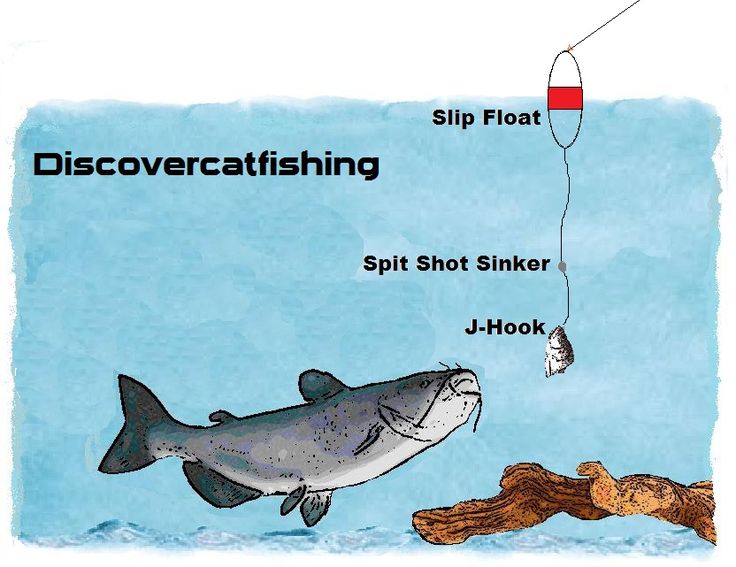
Each of these methods is promising in its own way and has a huge number of adherents.
Catching a catfish on a donk is the most ancient method of all listed. The tactic of fishing is to install tackle with bait in a promising place. As tackle for bottom fishing, it is advisable to use strong and reinforced feeder tackle:
- rod 3.6-3.9 m long and 150-200 grams test;
- good quality carp spinning reel;
- braid 0.2-0.3 mm is used as a base;
- the most convenient equipment will be the version with an anti-twist tube or with a sliding sinker;
- leash, 70 cm long, made of 0.4 mm line;
- hook No. 1/0 (No. 12 according to Russian numbering).
Of course, the tackle can be strengthened with more powerful components, but the delicacy of the tackle will be lost and the river giant may simply not take the bait.
Kwok fishing is primarily aimed at catching large specimens of catfish. The tactic of fishing is to go downstream on a boat and catch promising places. Elements of this method are kwok and spinning tackle. With the help of a quok, a sound is created that attracts catfish from the depths to the baited tackle. And it is better to strengthen the spinning tackle for catching a quok with stronger components, because the quok lifts even the largest bottom giants from the bottom.
The tactic of fishing is to go downstream on a boat and catch promising places. Elements of this method are kwok and spinning tackle. With the help of a quok, a sound is created that attracts catfish from the depths to the baited tackle. And it is better to strengthen the spinning tackle for catching a quok with stronger components, because the quok lifts even the largest bottom giants from the bottom.
Spinning is a creative and dynamic tackle that is used to catch predators, including catfish. The tactics of catching catfish with spinning is to carefully catch promising places. In this case, only one spinning technique is allowed - this is a jig. Moreover, jig wiring must be done slowly and with very low steps. Jig spinning tackle consists of the following components:
- heavy class spinning rod with fast action and 2.4m length;
- high-quality spinning reel numbered 3000 equipped with a 0.2 mm braid.
Trolling is the most modern way to hunt catfish.











